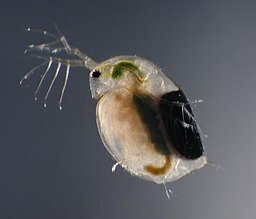Monitoring Local Soil Toxicity by Daphnia magna Viability
(1) Hopkinton High School, Hopkinton, Massachusetts
https://doi.org/10.59720/17-106
Daphnia magna, a freshwater crustacean, can be used to test for soil toxicity in viability bioassays. In the current study, we collected soil samples with various concentrations of toxins from six locations in the Greater Boston area, and measured the viability of D. magna after exposure over time. Samples were placed in petri dishes containing the same amount of soil and different volumes of spring water. D. magna in samples from the dumpster at the Sri Maha Lakshmi Temple and from Dennison Manufacturing Company died at an unusually high rate, possibly indicating the presence of higher concentrations of toxins relative to other locations. A linear regression analysis of our data suggested that the soil samples at the Sri Maha Lakshmi Temple and Dennison Manufacturing Company contained toxins inhibiting D. magna survival, resulting in an unusually high death rate.
This article has been tagged with: